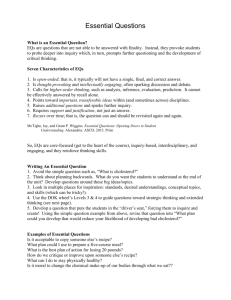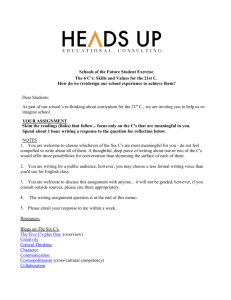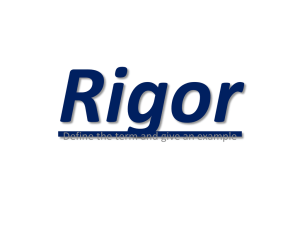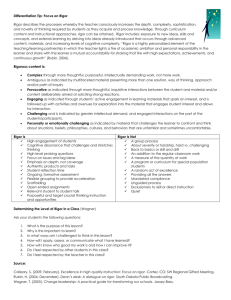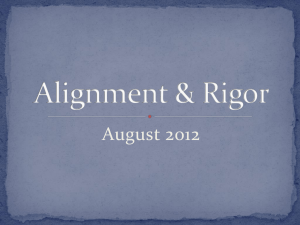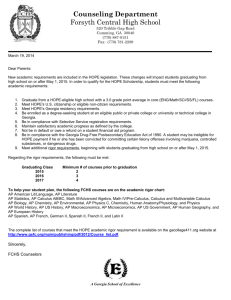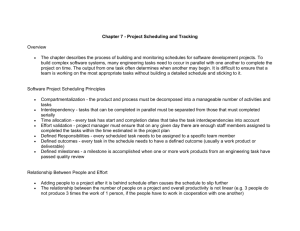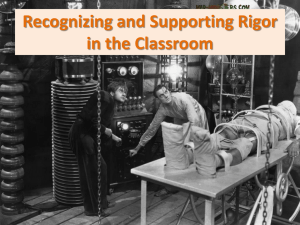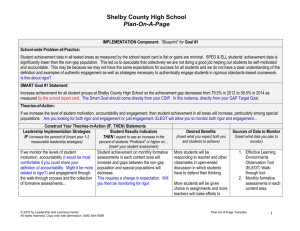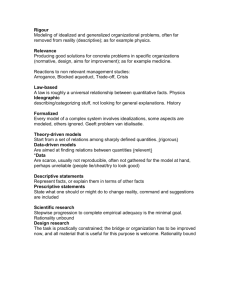Visual Arts Essential Questions info sheet
advertisement
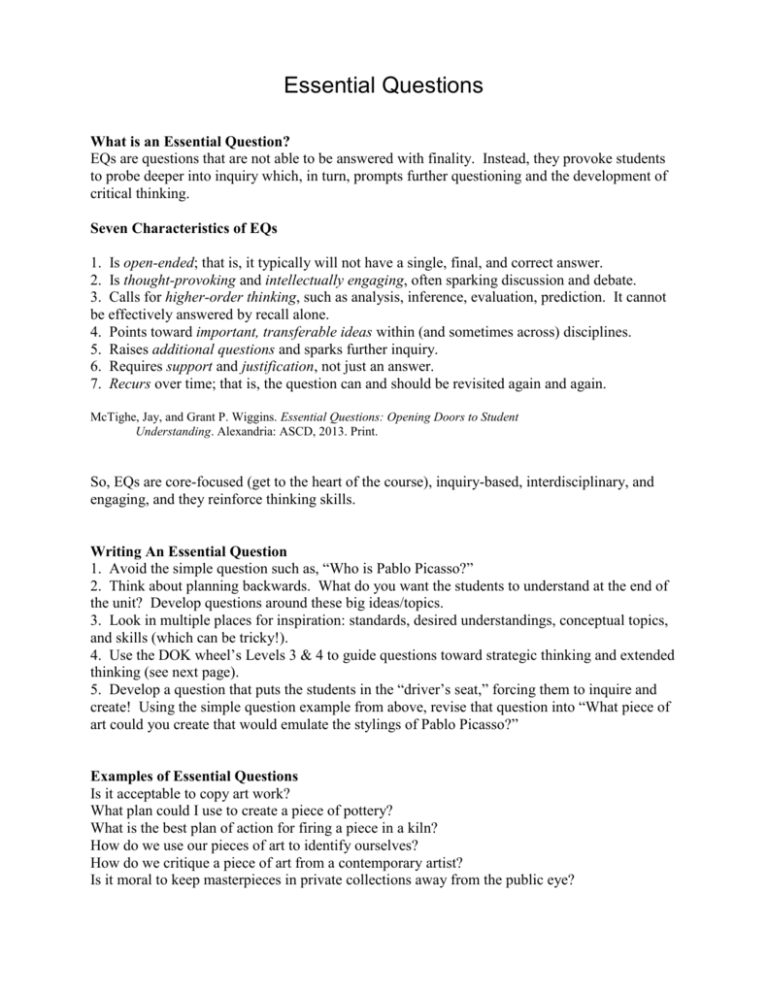
Essential Questions What is an Essential Question? EQs are questions that are not able to be answered with finality. Instead, they provoke students to probe deeper into inquiry which, in turn, prompts further questioning and the development of critical thinking. Seven Characteristics of EQs 1. Is open-ended; that is, it typically will not have a single, final, and correct answer. 2. Is thought-provoking and intellectually engaging, often sparking discussion and debate. 3. Calls for higher-order thinking, such as analysis, inference, evaluation, prediction. It cannot be effectively answered by recall alone. 4. Points toward important, transferable ideas within (and sometimes across) disciplines. 5. Raises additional questions and sparks further inquiry. 6. Requires support and justification, not just an answer. 7. Recurs over time; that is, the question can and should be revisited again and again. McTighe, Jay, and Grant P. Wiggins. Essential Questions: Opening Doors to Student Understanding. Alexandria: ASCD, 2013. Print. So, EQs are core-focused (get to the heart of the course), inquiry-based, interdisciplinary, and engaging, and they reinforce thinking skills. Writing An Essential Question 1. Avoid the simple question such as, “Who is Pablo Picasso?” 2. Think about planning backwards. What do you want the students to understand at the end of the unit? Develop questions around these big ideas/topics. 3. Look in multiple places for inspiration: standards, desired understandings, conceptual topics, and skills (which can be tricky!). 4. Use the DOK wheel’s Levels 3 & 4 to guide questions toward strategic thinking and extended thinking (see next page). 5. Develop a question that puts the students in the “driver’s seat,” forcing them to inquire and create! Using the simple question example from above, revise that question into “What piece of art could you create that would emulate the stylings of Pablo Picasso?” Examples of Essential Questions Is it acceptable to copy art work? What plan could I use to create a piece of pottery? What is the best plan of action for firing a piece in a kiln? How do we use our pieces of art to identify ourselves? How do we critique a piece of art from a contemporary artist? Is it moral to keep masterpieces in private collections away from the public eye? How & When to Use EQs Essential Questions can be used at any time, but they often guide units and discussions. The most important thing is that you start with clear and explicit goals. Students must also be “trained” so that they know what is expected of them. They need to know that the aim is sustained inquiry, not one answer that they think the teacher wants. Rigor, Depth of Knowledge, and the 4 Cs The use of EQs should add rigor to your coursework and develop the 4 Cs (critical thinking, communication, collaboration, and creativity) in your students; however, there are four myths about rigor in the classroom. 1. 2. 3. 4. Lots of homework is a sign of rigor. Rigor means doing more. Rigor is not for everyone. Providing support means lessening rigor. Instead, “rigor is creating an environment in which each student is expected to learn at high levels, each student is supported so he or she can learn at high levels, and each student demonstrates learning at high levels.” http://static.pdesas.org/content/documents/M1-Slide_21_4_Myths_of_Rigor.pdf
